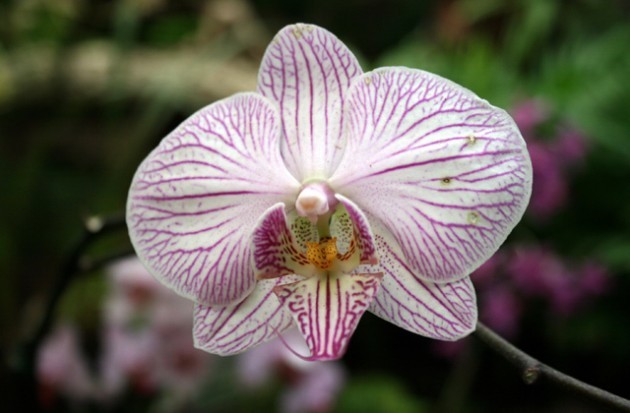June 2, 2009
The Female Orgasm

Sex is a process. It’s a beautiful, fun and wonderfully messy process that involves several stages of arousal and response. Orgasm (alongside desire, excitement, plateau and resolution) is just one stage of sexual response, but it tends to get the most attention. Though orgasms can be great (sometimes better than great), they aren’t always earth-shattering and shouldn’t be universally regarded as the main event.
Sex is often reduced to orgasm alone and this can put undue performance pressure on both women and men. While I’m an avid fan of performance when it comes to sex, pressure should never be a part of the equation. Our nervous systems don’t respond naturally or optimally when we’re put under pressure and this lessens our ability to experience pleasure. Our sexual response cycle, which includes blood circulation, erection, lubrication and muscle relaxation, is also negatively impacted. I’m not suggesting we forget about orgasms all together, but simply that we focus on other activities and sexual responses as well to enjoy a more varied, intensified experience.
Many women complain that they can’t achieve orgasm through sexual (penile-vaginal) intercourse alone. This is totally normal. Only an estimated one-third of women report experiences of orgasm through intercourse. Penetration often requires a handy accompaniment like manual stimulation, rubbing of the clit against the pelvic bone or the use of a toy that provides pressure or vibration to the clitoral glans, legs, bulb or hood. Women should feel no pressure to orgasm from penile-vaginal sex alone and their partners shouldn’t feel pressured to “produce” these types of orgasms.
Claims that all women can experience vaginal orgasms through particular techniques are inaccurate. Like all physiological responses, pleasure is a unique experience and there is no one-size-fits-all approach to orgasm. If you are interested in exploring vaginal orgasms, consider playing with the G-spot, which is the ridge-like area on the upper wall of the vagina with a texture similar to the roof of your mouth. G-Spot orgasms are associated with the vagus nerve and can result in female ejaculation, so don’t worry if some fluid comes gushing out during the moment of truth. Some women enjoy pressure on the cervix (the opening to the uterus at the back of the vagina), while others find this painful or uncomfortable. Experimenting on your own is probably the best way to learn about your distinctive responses and become an expert in your own pleasure.
If you’re interested in intensifying sexual response and orgasm, consider exercising your PC muscles through Kegels, taking time to stimulate the entire body to discover new erogenous zones and playing with fantasy before and during sexual activity. Sexual expression and response know no limits, so why reduce sex to intercourse alone? Our potential for pleasure can only be realized when we eliminate the pressure to perform and expand our definitions of sex to include activities that enhance our bodies’ natural sexual responses.










